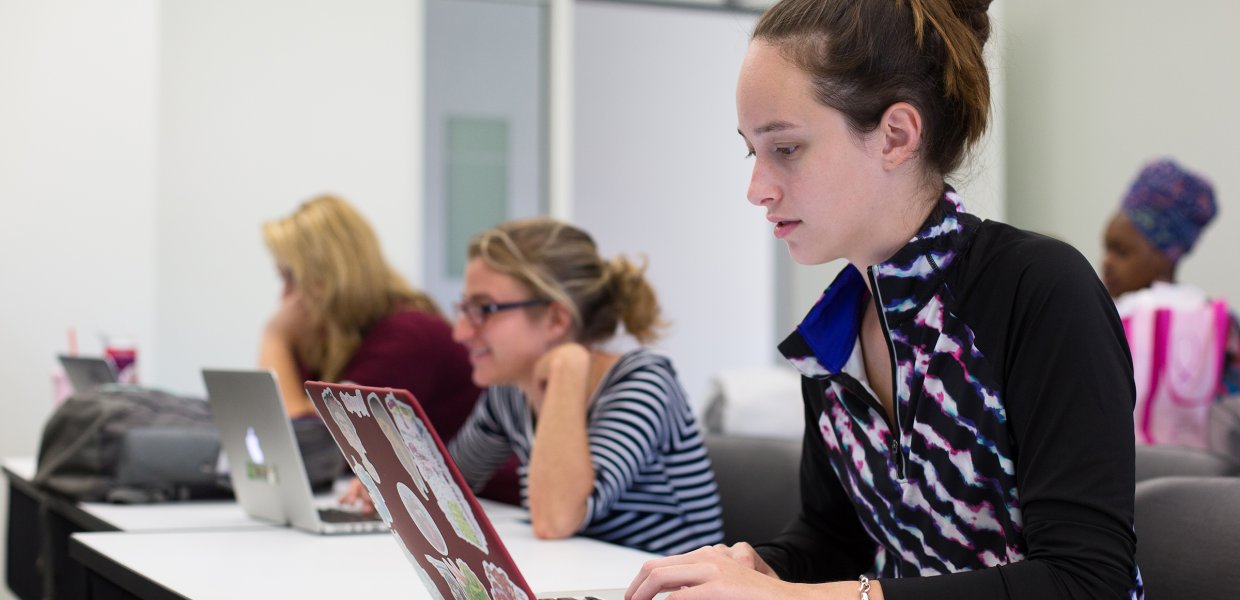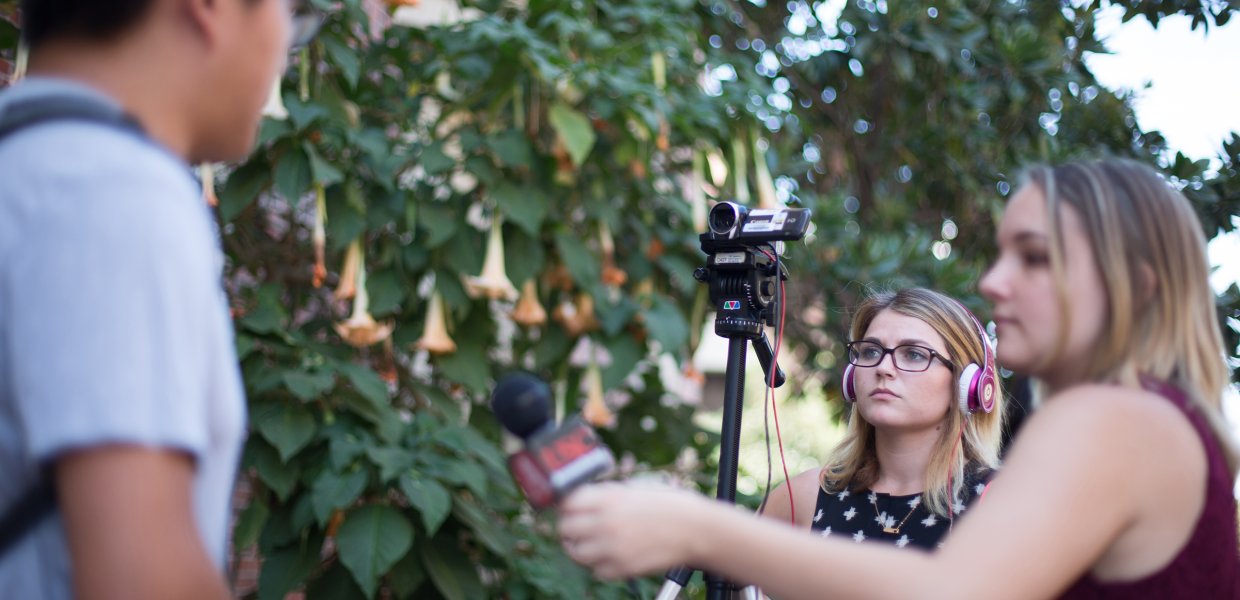A few years ago, USC Annenberg lecturer Miki Turner began to notice a pattern in her journalism history class, JOUR 505: The Practice: The Evolution of Journalism as a Profession. Asked if they could explain why 1968 was such a pivotal year in American history, her students were stumped. In another class, she recalled, some students were confused when she referred to the John F. Kennedy assassination.
“It became very apparent that the millennial generation does not have a really solid understanding of history, particularly when it comes to this country,” Turner said.
That’s when she decided to approach things a bit differently.
“I thought, let's just have them go back and research the coverage of all these issues and compare and contrast,” Turner said. “It occurred to me that it would be a more prudent way for them to learn this history.”
That more prudent way is a project undertaken in this Fall’s JOUR 505, dubbed “Undercoverage: The Evolution Will be Posted” as a nod to Gil Scott-Heron’s era-defining 1970 anthem, “The Revolution Will Not be Televised.” Students were divided up into four teams, each focusing on one of four issues: race, religion, politics and gender. The teams then took a deep dive into the specifics of how their issue has been covered by the media over the years, resulting in a series currently being rolled out on Medium and will eventually be published on Annenberg Media.
“It's totally multimedia—it's video, it's podcasts, it's graphics, it's text,” Turner said. “This is everything we teach them here, thrown in the pot.”
Rachel Ramos (M.S. Journalism '17), Alex Salvi (M.S. Journalism '17) and their team looked at how politics has been covered by the media. They learned that new technologies play a large part in the evolution of the media’s coverage of politics.
“Back in the day when broadcast television evolved, that's when people's opinions started changing,” Ramos said. “The debates being televised for the first time—that was a huge deal for people.”
The group opened their research in 1960, with the first-ever televised presidential debate between John F. Kennedy and Richard Nixon. From there they looked at select events in political history and how different mediums have been used to convey their messages to the public, from televised coverage of the Vietnam war and the Civil Rights Movement to the social media-fueled activism of Black Lives Matter. They also interviewed USC Annenberg professor Richard Reeves, who has written numerous books on politics, presidents and their relationship to the media.
“We went throughout history and drew parallels and highlighted the differences between two different mediums—such as going from radio to television, to now a more digital world,” Salvi said.
“People are tweeting about debates, and they’re more broadcast all over so many platforms,” Ramos said. “The world of journalism has changed so much and that's what we're trying to show.”
Madison Weil (M.S. Journalism, ‘17) was part of the team that looked at gender, focusing particularly on how women and the LGBT community have been covered by the media. As part of the research Weil interviewed Laura Castañeda, professor of professional practice at USC Annenberg School of Journalism.
“Something that we learned was the concept of intersectionality,” Weil said. “A white woman being covered [by the media] is going be different than that of an African American woman, or a Latino woman. [Castañeda] in particular talked about Latino women in the media and how they've had to overcome stereotypes, for example, in the portrayal in movies. Historically and unfortunately there has always been that stereotype of being a maid or secretary, or some other kind of racial and gender stereotype.”
Overall, Weil found that media coverage of women and the LGBT community is better today than in the past—but there’s still room for improvement.
“Just being a female in any industry, as much as we'd like to think that we've made significant progress, there is still progress to be made,” she said. “That's why it's important to understand these past trends for whatever industry you're going into.”

For Tiffani DuPree (M.S. Journalism, ‘17), whose team focused on depictions of race in the media, the project was a perfect opportunity to delve into her love of history, which first sparked during her undergraduate at Howard University.
“My part of the project was to basically put together a timeline of various events within my specific race—the African American community—and how these events have helped shape the news industry,” DuPree said.
Her timeline begins in the 1950s and extends to present day, “so I had the March on Washington as one of my events, also the Trayvon Martin case,” DuPree said. “I basically learned that everything has an effect on something else, each event changing the way journalists cover future events.”
Ethan Varian’s (M.S. Journalism ‘17) team looked at depictions of religion in the media, while he focused on Judaism.
“We found that there weren't as many big events for American Judaism on how they were covered in the media, compared to different races or religions,” Varian said. Instead, the team had to look at how Judaism has been portrayed in Hollywood.
“This definitely got me thinking about how the media works for different groups—something I hadn't thought much about as I should have in the past,” Varian said.
These learning experiences are exactly what Turner hoped to engender with this project, where students uncover histories that they may not have otherwise learned about in school or through the media. Once their work is published, the hope is for readers to make their discoveries.
“The perceptions we have of people who don't look like, have been largely informed by the mass media,” Turner said. “So we want you to look at race and try to challenge the way you think. The same thing with gender, religion, and politics.”
Dupree hopes that her work will become a resource for other students and aspiring journalists.
“I hope that people can apply this to their lives later on if they're going into the journalism industry,” she said. “Hopefully they'll remember this project, and they'll say ‘I remember this is how the story used to be covered, and this is how it's been covered now.’"
Turner was worried at first that her neophyte journalists might be overwhelmed by the scope of the project.
“I know it was a really frightening experience for them to try to put this together,” she said. “But they pulled it together. So I'm really proud of them. I think we will accomplish our goal, and we will challenge the way some people think.”


